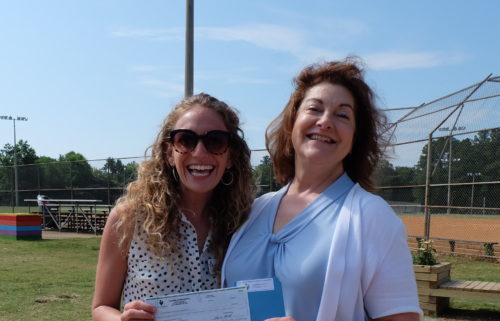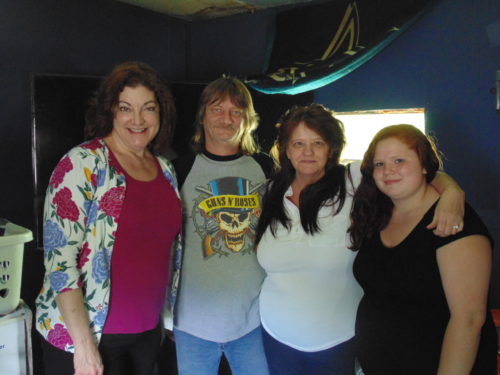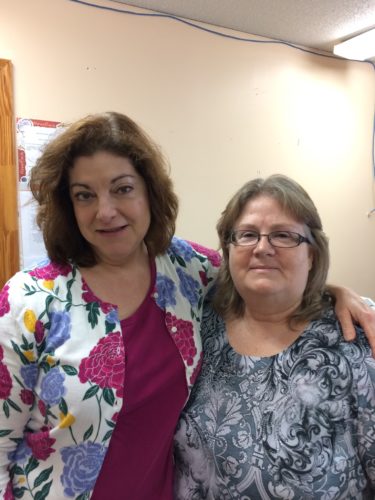When I started working for Children Incorporated in 2003, one of the first things I heard about was Dr. Richard Carlson’s mention of the organization in his landmark best-selling book, Don’t Sweat the Small Stuff.
I was told that Dr. Carlson’s kind words about Children Incorporated had generated literally thousands of new child sponsorships, and that even more lives had been changed by contributions resulting from the same. I recall that Mrs. Marian Cummins, who was serving as our President and Chief Executive Officer at the time, thought very highly of Dr. Carlson, and they talked on the telephone often. I spoke with him a time or two, myself, and found him to be incredibly warm and caring. Dr. Carlson was much-loved by our staff, and his sudden death in December of 2006 came as a huge shock to us all.

There are now nine books in the Don’t Sweat the Small Stuff series.
Since that time, Richard Carlson’s work has been carried on and greatly expanded by his wife, Kristine Carlson. Over the last eleven years, many more volumes have been added to the Don’t Sweat book series, and Kristine is now a best-selling author and world-renowned speaker in her own right. She and her family have continued to support the work of Children Incorporated since Richard’s passing, and Kristine reached out to me earlier this year and shared her desire to do even more to assist us in our work of providing for impoverished children. I recently had the opportunity to chat with her about this subject.
RC: Kris, as you celebrate the twentieth anniversary of Don’t Sweat the Small Stuff, can you tell me a little about what initially led your husband, Dr. Richard Carlson, to write the first book?
KC: Don’t Sweat the Small Stuff was Richard’s tenth book. He pioneered the short chapter, “how to” book of advice as a new structure for writing his wisdom, which focuses on the psychology of mental health and well-being, and how to practice a happy life. There are now nine books in the Don’t Sweat series, for everyone from moms to teens, and for every topic from work to love. These books specifically tailor anecdotes for how to deal with minor annoyances that cause big stress, and how to choose happiness and peace over stress in all situations in life.
RC: Did you – or he – have any idea at the start that Don’t Sweat the Small Stuff would have such a universal impact? Did you ever envision an entire series of the Don’t Sweat books?
Every child in this world should have their basic needs met so that they have the same opportunity for happiness — to explore their human potential.
KC: I don’t think anyone could have had any idea of the kind of phenomenal success and impact that the flagship book, Don’t Sweat the Small Stuff, had on the world. That was inconceivable. What I can tell you is that Richard was incredibly tenacious. He was a talented writer on his path, and he just kept on writing.
One day, he almost quit; but the very next day, he was flying to be on The Oprah Show, for the first time, in a panel discussion. The Oprah producer claimed that she was bent down in an aisle her library, and Richard’s book You Can Be Happy No Matter What flew off the top shelf and hit her in the back of the head. It was the perfect book and author to feature on a show about stress and how to manage it.
This event marked a pivotal moment in Richard’s career, and he wrote Don’t Sweat the Small Stuff three years later. Don’t Sweat the Small Stuff has been translated in over forty languages and sold in over 125 countries. No one can preconceive that kind of impact, and we have always felt immeasurable gratitude for being instruments of love, in service to the world through our writing.
RC: Richard’s mention of Children Incorporated in the first book was one of the most meaningful things to ever happen to our organization. Thousands of impoverished children were helped as a result of his simple words: “There are many fine agencies to choose from, but my personal favorite is Children Incorporated.” Do you recall how he first became interested in Children Incorporated?

All of the books in the series show you how to practice and choose happiness, and live the best and most vibrant life you possibly can.
KC: I wish I knew how Richard found Children Incorporated, though it was likely through a friend. We always loved donating in small ways before we could donate in big ways — and he loved kids, as I do. Every child in this world should have their basic needs met so that they have the same opportunity for happiness — to explore their human potential. I can speak for Richard when I say “we” are overjoyed by this contribution. It shows the power of ONE. One person wrote one chapter, and it multiplied into thousands of sponsors! I am simply in awe of his wisdom, and the grace by which he lived – his impact on me to live in the same way and carry on.
RC: You are now challenging your friends and the many people who follow you on the internet and through other means to sponsor a child in honor of this special twentieth anniversary of Don’t Sweat the Small Stuff. The goal is to get 2,000 new sponsors to assist 2,000 additional children. What made you decide to continue supporting our work in this very special way?
KC: I believe one of the greatest gifts we can give ourselves is to give to others; it is the foundation of truly living gratefully and abundantly. It is a blessing to be in a position to help a little or a lot. When we think of the change in our pockets that we spend on lattes and coffees, that little bit could go to feeding a child. I can’t think of a better way to celebrate the success of our series than to do our best to challenge our community to sponsor a child in honor of Richard’s impact on their lives. The Richard Carlson Memorial Foundation will also match up to $5,000 in additional donations that are made in the book’s name this year. I am most excited to see this challenge come to fruition!
RC: We know that people all over the world have experienced life changes as a result of the wisdom shared in the Don’t Sweat books. I’d like to turn it back to you. Can you tell me what the books have meant to you personally?
KC: It’s rare to see two writers in one family. I wouldn’t have even dreamed of aspiring to such a fulfilling career, but my husband knew I was a writer long before I did. He invited me into the series as his co-author in Don’t Sweat the Small Stuff in Love. I had already been helping him with chapter titles and ideas for Don’t Sweat the Small Stuff with Your Family (I was home sweating the small stuff with our two young girls while he was on the road promoting his latest book!). Then, after the success of Love, he asked me to write my first solo book in the series: Don’t Sweat the Small Stuff for Women. I gulped and accepted the challenge — then discovered that I, too, am a writer. It was like an otter taking to water — and I’ve been writing ever since. These books have changed the trajectory of my life, and they’ve given me great purpose to carry on for Richard. While we couldn’t have known he would pass from an embolism at such a young age and so quickly, he brilliantly prepared me to step into his world.
Thousands of impoverished children were helped as a result of his simple words: “There are many fine agencies to choose from, but my personal favorite is Children Incorporated.”
RC: Is there a particular bit of wisdom – perhaps some especially moving nugget of truth from the Don’t Sweat series — that you would like to share with us at this time?
KC: For twenty years, the Don’t Sweat the Small Stuff books have pointed readers toward living a focused and happy life. The latest research on happiness shows that happiness is a choice, and it’s all how you practice life that matters most in achieving a high level of contentment and happiness. All of the books in the series show you how to practice and choose happiness, and live the best and most vibrant life you possibly can.
RC: Helping children live the most vibrant and promising lives that they possibly can is also the goal of Children Incorporated. Our work is all about offering those who struggle the possibility of a better education, a sense of hope, and opportunities to improve their place in life. We are indebted to you, Kristine — and of course, to Richard — for your incredible support of our work. Thank you!
***
HOW DO I SPONSOR A CHILD THROUGH CHILDREN INCORPORATED?
You can sponsor a child with Children Incorporated in one of three ways – call our office at 1-800-538-5381 and speak with one of our staff members, email us at sponsorship@children-inc.org, or go online to our donation portal, create an account, and search for a child that is available for sponsorship.










